Boarding Down the Slopes of an Active Volcano in Nicaragua
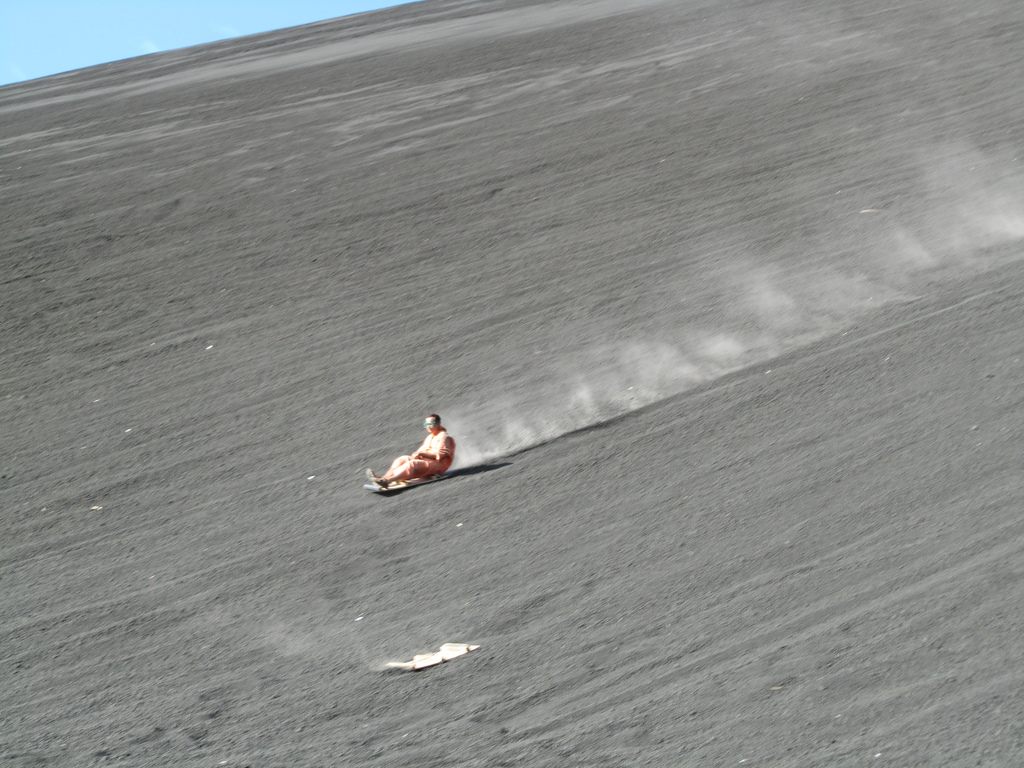
Cerro Negro is the only place in the world where you can go volcano boarding. (Photo: Blue Sonicboy/ Flickr CC BY-SA 2.0)
On May 12, 2002, a Frenchman named Éric Barone rode his bicycle down the steep black slope of Cerro Negro, an active volcano in Nicaragua. In doing so, he achieved the world record for highest speed recorded on a bicycle on gravel: 107 miles per hour. He nearly killed himself in the process.
Similarly attracted to the thought of careening down the steep face of Cerro Negro, Australian Daryn Webb took to the black slopes of the volcano in 2004—on a mattress. In the hopes of reaching higher speeds, he later hit the slopes on his trusty mini-fridge. Finally, he settled on a wood and Formica board that was somewhere between a surfboard and a snowboard, and thus, volcano boarding was born.
Cerro Negro is the only place in the world where volcano boarding exists. Tours run daily from the nearby colonial city of Leon, bussing thrill-seeking travelers to the base of the volcano, then guiding them up the slopes.
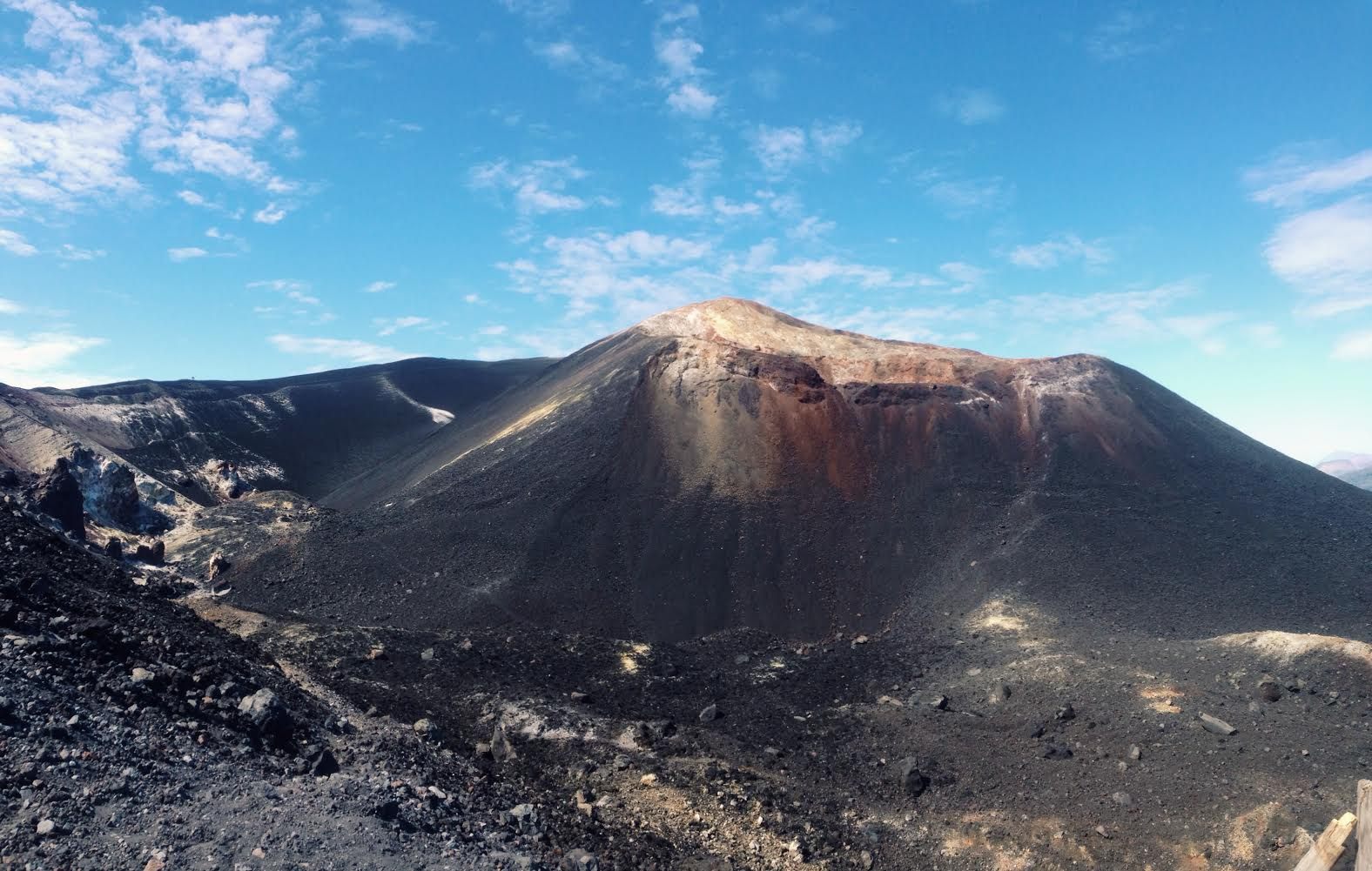
It takes an hour’s worth of hiking to reach the summit. (Photo: Josh Lee)
It is a swelteringly hot day over a decade after Barone’s wild ride, and I am following a line of would-be volcano boarders up the face of the black mountain. In and of itself, hiking up an active volcano is an experience. The rest of the volcanoes in the Cordillera de los Maribios mountain range loom in the distance as dramatic black mounds on the horizon. The smell of sulphur hangs in the air. The group turns a corner and the crater of the volcano is suddenly visible. Smoke rises from the center in small plumes.
While the hike is only an hour long, the hot Nicaraguan sun beats down relentlessly, and the winds at the top of the volcano are unforgiving. The volcano board in your hands is basically like a kite pulling itself—and you—off the face of the mountain. I stare enviously at our German guide, who lithely clambers up the gravelly slope with the ease of a mountain goat.
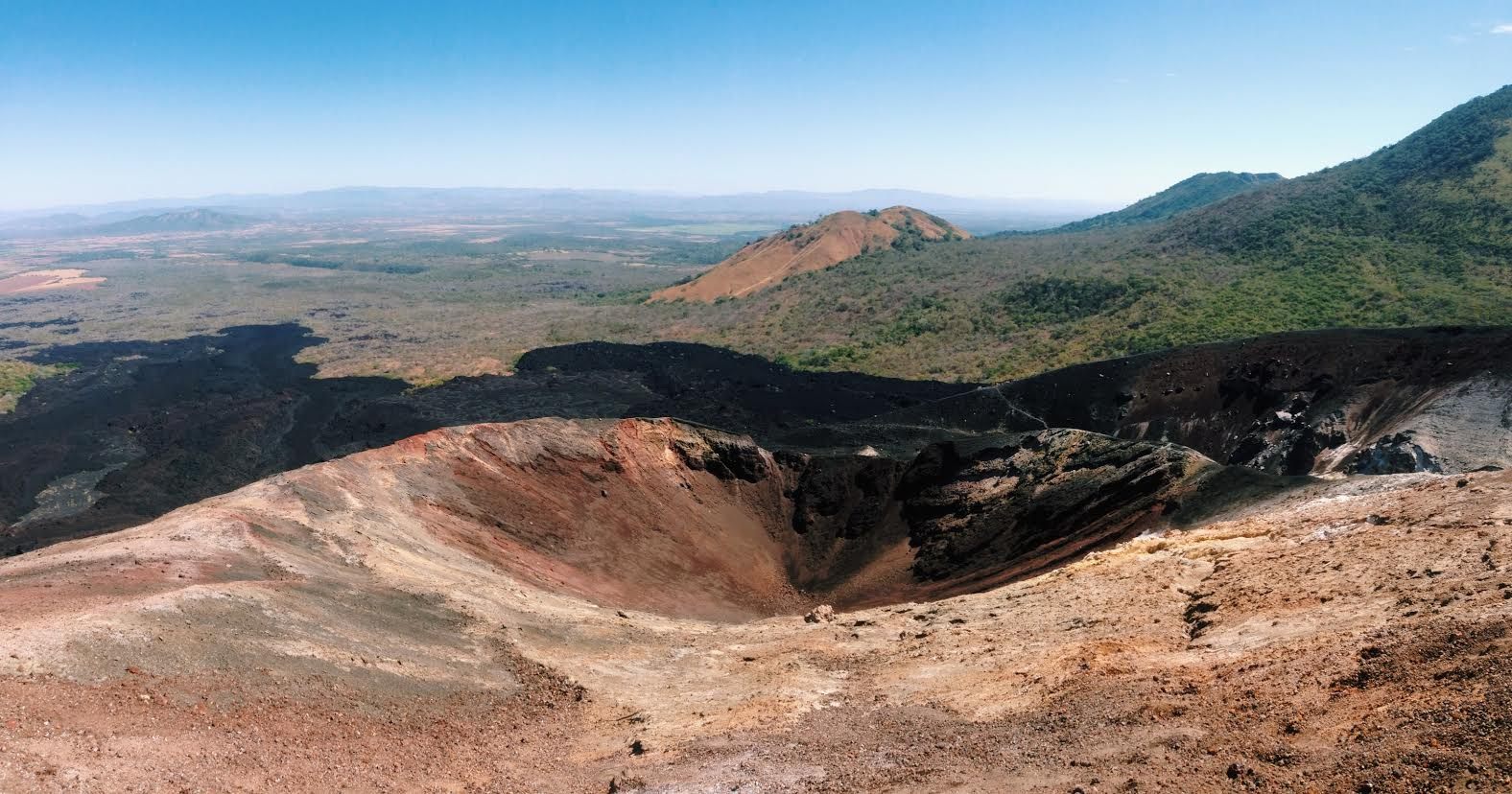
The view from Cerro Negro. The black line along the base of the volcano is not a shadow—it’s dried lava from a previous eruption. (Photo: Josh Lee)
At the highest point of the volcano, we are instructed to put on big industrial jumpsuits, protective goggles, gloves, and bandanas to cover our faces. The entire outfit would not have been out of place on the set of Mad Max.
The group gathers around the two trails marked at the peak, and people begin descending in pairs. What makes the wait even more nerve-wracking (exciting?) is the fact that you can’t see your fellows as they board down due to the steep angle of the slope. Despite this minor anxiety, it’s hard to believe that we are all in line for what CNN once ranked as number two on its list of 50 ways to be a daredevil. Faces are jovial, body language is calm, and the people who made it to the bottom look to be in one piece, at least from up here.
 Volcano boarding tours require participants to wear jumpsuits, goggles, gloves and bandanas to protect against sharp black sand and volcanic glass. (Photo: Josh Lee)
Volcano boarding tours require participants to wear jumpsuits, goggles, gloves and bandanas to protect against sharp black sand and volcanic glass. (Photo: Josh Lee)
The moment of truth arrives, and I push off on my board. I make it a grand total of four feet, at the groundbreaking pace of a few yards per minute. This is anticlimactic. It takes a few tries to get the momentum going. But soon I am off, hurtling down Cerro Negro and well on my way to terminal velocity.
While you can stand up (because, you know, it looks cooler), the board moves faster if you treat it like a sled. In this moment, as I cruise down the smooth, sandy slope, I could be sledding down a desert dune in Dubai—but then I remember that this board has Formica underneath it so that volcanic glass doesn’t tear it apart, and that the world is burning beneath me.

Cerro Negro erupting in 1948. (Photo: Public Domain/Wikipedia Commons)
Cerro Negro is the youngest volcano in Central America, and just like a small child, it is restlessly active. Since its birth in 1850, it has erupted approximately 20 times. It is also overdue for an eruption. “The government is monitoring [its activity] everyday,” says Ramiro Guido, who works at Bigfoot Hostel Leon, whose tours take around 30 people down the volcano each day. “If they see any different behavior they’ll let us know.”
Though the concept of sandboarding exists in other places around the world, volcano boarding is unique to Cerro Negro because of its fine black volcanic sand. “Other [volcanoes] are made of rock and metals,” explains Guido. “[Cerro Negro] is good for sledding because it’s flat and smooth.”
While my experience was relatively smooth, there is no doubt that volcano boarding is an extreme sport. The speed record for going down Cerro Negro on a volcano board is 59 miles per hour, according to Guido. The danger is part of the pull, he says. “There’s a lot of adrenaline involved—if you fall, you can break anything, you could die.”




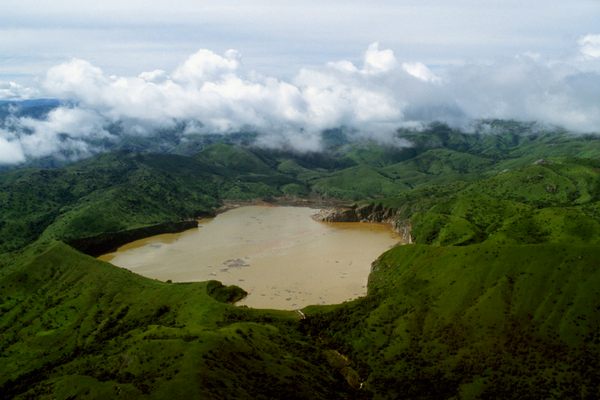
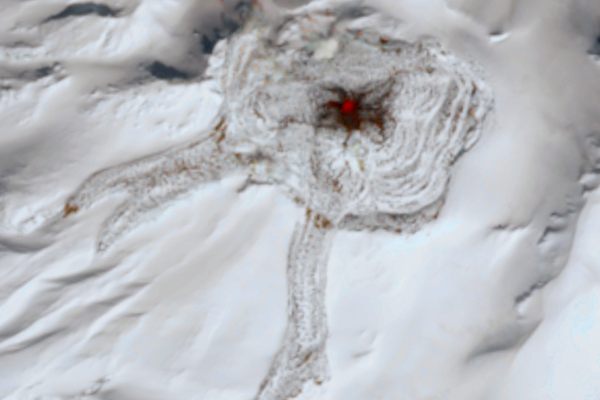















Follow us on Twitter to get the latest on the world's hidden wonders.
Like us on Facebook to get the latest on the world's hidden wonders.
Follow us on Twitter Like us on Facebook